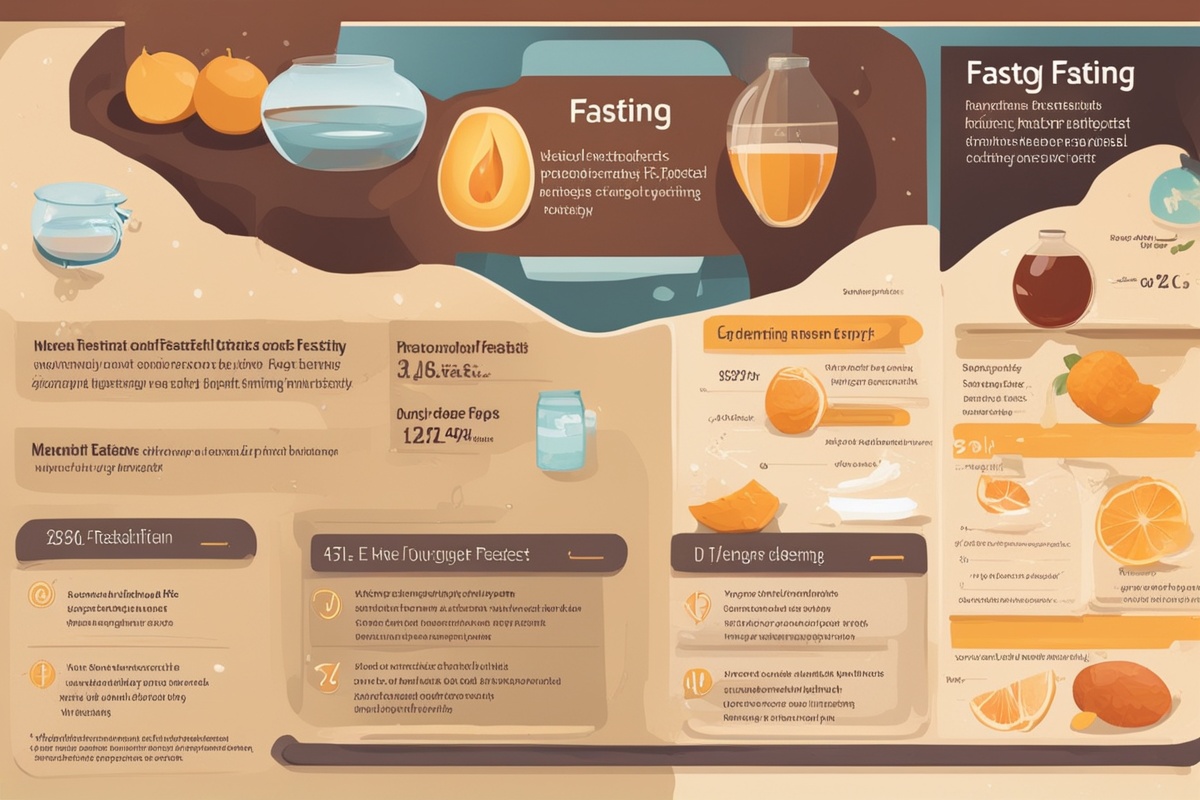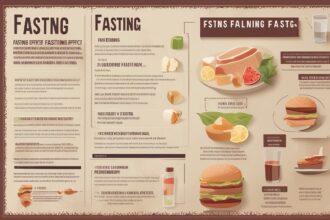Fasting, particularly extended fasting, has gained significant attention for its potential health benefits, including weight loss, improved metabolic health, and cellular repair through autophagy. However, embarking on a prolonged fast—typically lasting 24 hours or more—can come with challenges and drawbacks that need to be carefully managed. In this post, we’ll dive into Managing Extended Fast Drawbacks, offering practical strategies to mitigate the side effects and ensure a safer fasting experience.
Understanding the Challenges of Extended Fasting
Extended fasting, while beneficial for some, can place significant stress on the body, especially if not approached with caution. Common drawbacks include physical symptoms like fatigue, headaches, and dizziness, as well as mental challenges such as irritability and difficulty concentrating. These issues often arise due to dehydration, electrolyte imbalances, or the body’s adjustment to using stored energy sources like fat for fuel. Recognizing these challenges is the first step in Managing Extended Fast Drawbacks, as it allows you to prepare and respond effectively.
Before starting an extended fast, it’s crucial to consult with a healthcare professional, especially if you have pre-existing medical conditions or are new to fasting. Understanding your body’s limits and preparing for potential side effects can make a significant difference in your fasting journey.
Hydration: Combating Dehydration and Electrolyte Imbalance
One of the most common issues during extended fasting is dehydration, which can lead to headaches, lethargy, and muscle cramps. Since you’re not consuming food, you might also miss out on water and electrolytes typically obtained through meals. To address this drawback, prioritize hydration by drinking plenty of water throughout the day. Adding a pinch of high-quality salt to your water or consuming an electrolyte supplement (without calories) can help maintain sodium, potassium, and magnesium levels.
For more information on maintaining hydration during fasting, check out our detailed guide on Hydration Tips for Fasting. By staying hydrated, you can significantly reduce the physical discomfort associated with extended fasting and improve your overall experience.
Managing Hunger Pangs and Cravings
Hunger pangs and food cravings are inevitable during an extended fast, especially in the first few days as your body adjusts to the absence of regular meals. These sensations can be mentally taxing and may tempt you to break your fast prematurely. A key strategy for Managing Extended Fast Drawbacks like hunger is to stay busy—engage in light activities, meditation, or hobbies to distract yourself from thoughts of food.
Additionally, sipping on black coffee, green tea, or herbal teas (without sweeteners) can help suppress appetite. If cravings become overwhelming, remind yourself of your fasting goals and consider breaking the fast with a small, nutrient-dense meal if necessary. For tips on handling cravings, explore our post on Overcoming Fasting Cravings.
Addressing Fatigue and Low Energy Levels
Feeling tired or sluggish is a frequent side effect of extended fasting, often due to a drop in blood sugar levels or the body’s transition to ketosis, where it burns fat for energy. To manage this drawback, ensure you’re getting adequate rest and avoid strenuous physical activity during the fast. Light walks or stretching can help maintain circulation without overexerting yourself.
If fatigue persists, consider shortening the duration of your fast or incorporating intermittent fasting as a stepping stone before attempting longer periods. Listening to your body is essential in Managing Extended Fast Drawbacks like low energy. For more insights, read our article on Maintaining Energy During Fasting.
Dealing with Mental and Emotional Challenges
Extended fasting doesn’t just affect the body—it can also take a toll on your mental and emotional well-being. Irritability, mood swings, and difficulty focusing (often called “brain fog”) are common as your body adapts to the lack of food. These challenges can be exacerbated by stress or poor sleep, making it harder to stick to your fasting plan.
To manage these mental drawbacks, practice mindfulness techniques such as deep breathing or journaling to process emotions. Surround yourself with a supportive community or let loved ones know about your fasting goals so they can offer encouragement. If mental strain becomes overwhelming, it’s okay to pause and reassess your approach to fasting. Learn more about mental health during fasting in our guide on Fasting and Mental Health.
Breaking the Fast Safely to Avoid Digestive Issues
One often overlooked aspect of extended fasting is the refeeding process. After days without food, your digestive system becomes more sensitive, and diving straight into heavy meals can lead to bloating, nausea, or even a condition known as refeeding syndrome in extreme cases. To prevent these issues, break your fast with small, easily digestible foods like bone broth, steamed vegetables, or a small serving of fruit.
Gradually reintroduce larger meals over the next 24–48 hours to allow your body to readjust. This careful approach is a critical part of Managing Extended Fast Drawbacks and ensures that the benefits of fasting aren’t undermined by post-fast discomfort. For a step-by-step guide, refer to our article on How to Break a Fast Safely.
Disclaimer: The information provided in this article is for educational purposes only and should not be considered medical advice. Extended fasting can carry risks, especially for individuals with underlying health conditions, pregnant or breastfeeding women, or those on certain medications. Always consult with a qualified healthcare provider before starting any fasting regimen to ensure it is safe for your individual circumstances.
References
- Harvard Health Publishing – Intermittent Fasting: Surprising Update
- Mayo Clinic – Fasting Diet: Can It Improve My Heart Health?
- National Institutes of Health – Effects of Fasting on Metabolism
- WebMD – Fasting Diets: What You Need to Know
- Johns Hopkins Medicine – Intermittent Fasting: What Is It, and How Does It Work?
This content is for informational purposes only and not a substitute for professional advice.






